Thecus M3800 NAS Stream Box – Total Media Storage
Building the M3800 Raid 5 Array

We decided to build a RAID Level 5 Array since it is not only one of the most popular RAID levels, but also because RAID 5 is seen by many as the ideal combination of good performance with good fault tolerance. As you should already know, a Redundant Array of Independent Disks (RAID) is an array of multiple hard drives that provides data security and a higher level performance by accessing several hard disks simultaneously which improves Input/Output performance over a single hard disk. Data security is enhanced by a RAID, since data loss due to a hard disk failure is minimized by regenerating redundant data from the other RAID hard disks.
RAID 5 includes disk striping at the byte level and parity information is written to several hard disk drives. If a hard disk fails, the system uses parity stored on each of the other hard disks to recreate all missing information. This should remove the “bottleneck” that the dedicated parity drive represents, improving write performance, and allowing better parallelism in a multiple-“transaction” environment. Typically, RAID 5 is best suited for networks that perform many small I/O transactions at the same time, as well as applications with high read requests but low write requests such as database or business applications. Since we really want to store, stream, and backup our multimedia, RAID 5 is a very good choice for us.
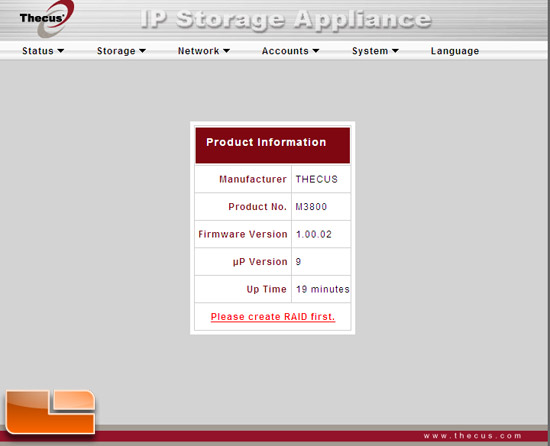
After logging in to the M3800, we see the current status and a message to us that we need initially to specify a RAID configuration.
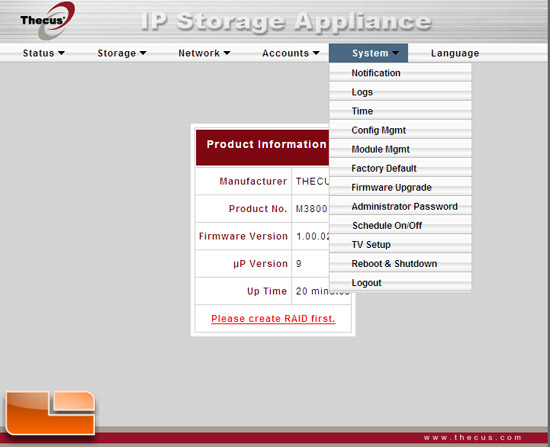
The GUI has a very nice look and feel to it. The pull-down menus have everything we need to organize and build our RAID. When we went to the RAID Configuration sub-menu, we saw the three Seagate 1TB drives that we installed. We chose the RAID 5 option and selected the drives that we wanted to include in the array. We chose a stripe size of 64KB which is a fairly conservative size for enterprise use, but for us we expect better results than with a stripe size 128KB or larger. Results will definitely change depending on your use, operating system and hard drive performance.
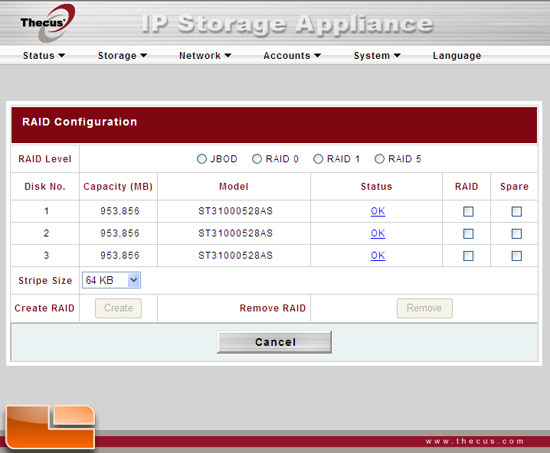
After that, the RAID is created. Now this is not exactly a quick process. The Thecus M3800 starts to churn and do its thing setting up but is visible and usable on your network. The M3800 software does a really good job of telling you the progress of the RAID build including the processor usage and temperatures of the drives. Its really nice that you dont always have to log in to the Thecus configuration menu to get all of the information since the display panel consistently gives you updates on RAID heath, NAS temperature, IP address, and up-time.
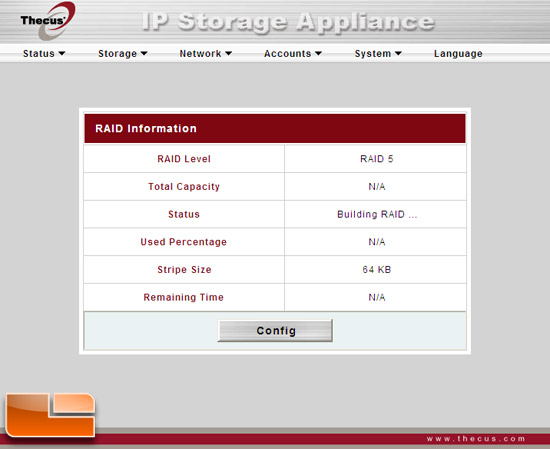
Back to the NAS build. After 12 hours our RAID 5 system is done and the Thecus information center shows a Healthy status as well as the 2 TB (1,902,664 MB) size. With the very robust Thecus menu system, you have the ability to create accounts, edit permissions, and initiate the various servers.
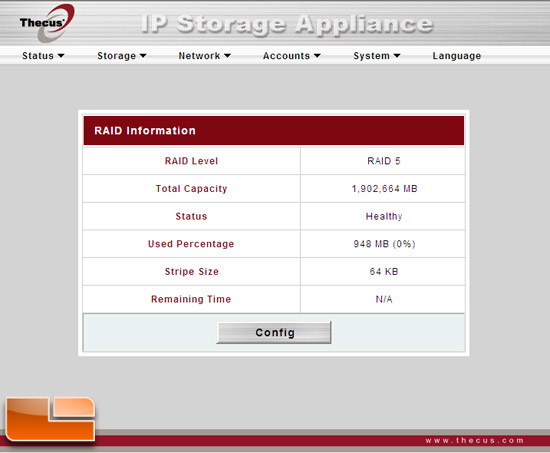
The only extra thing we did at this point was to turn on the iTunes and Media servers since we wanted to get to the benchmarks as quickly as possible.

Comments are closed.